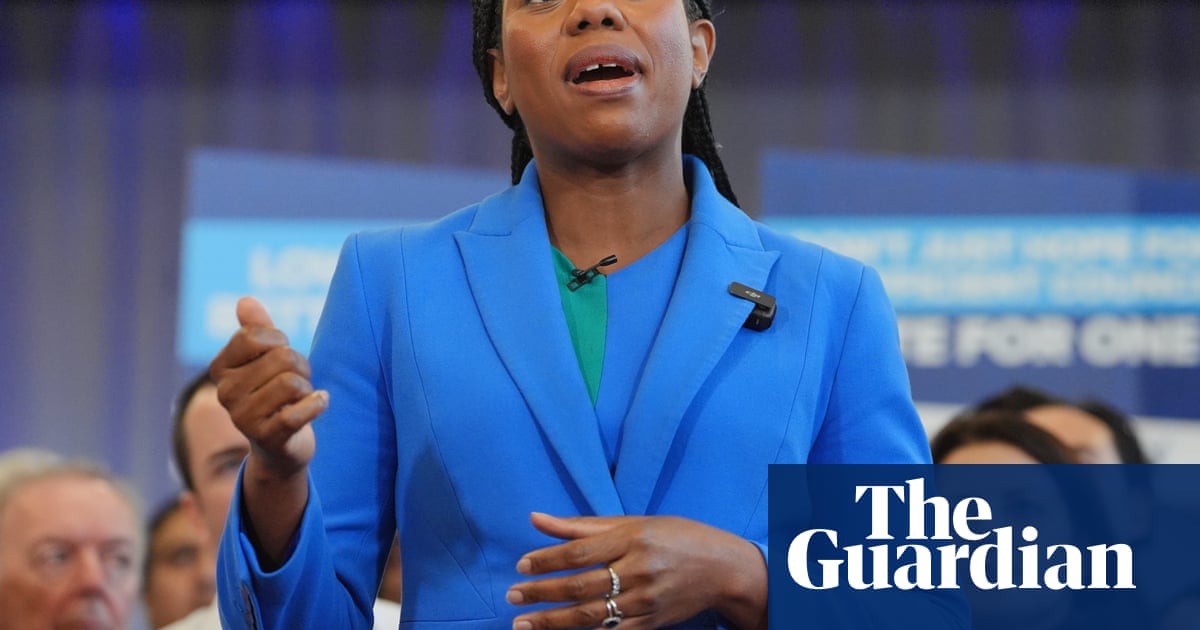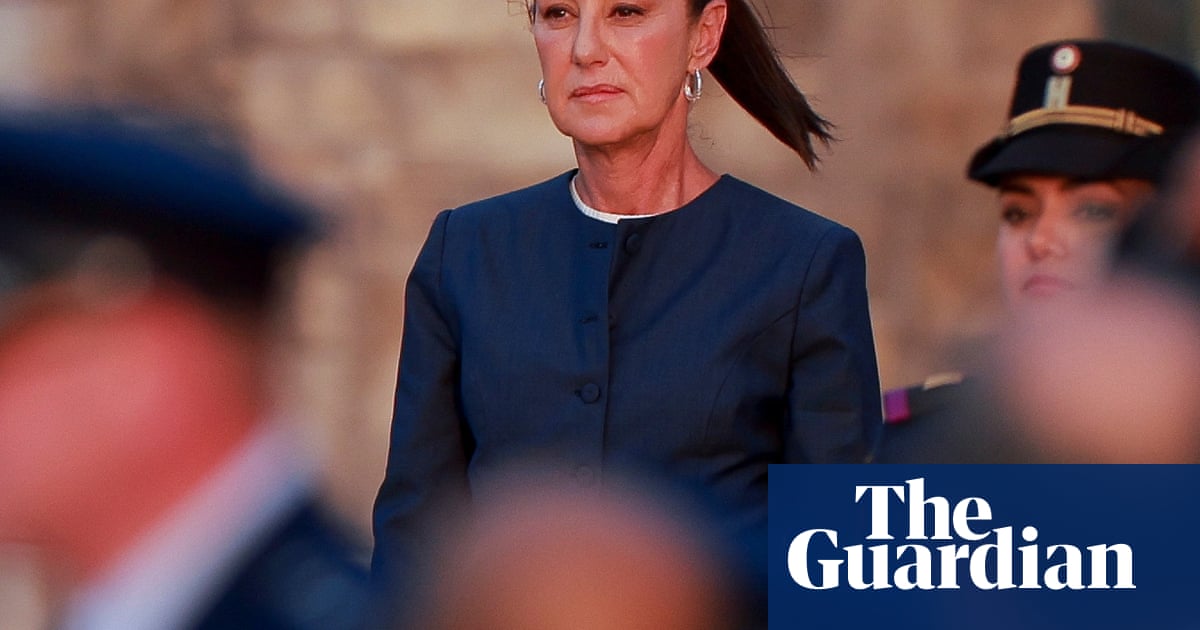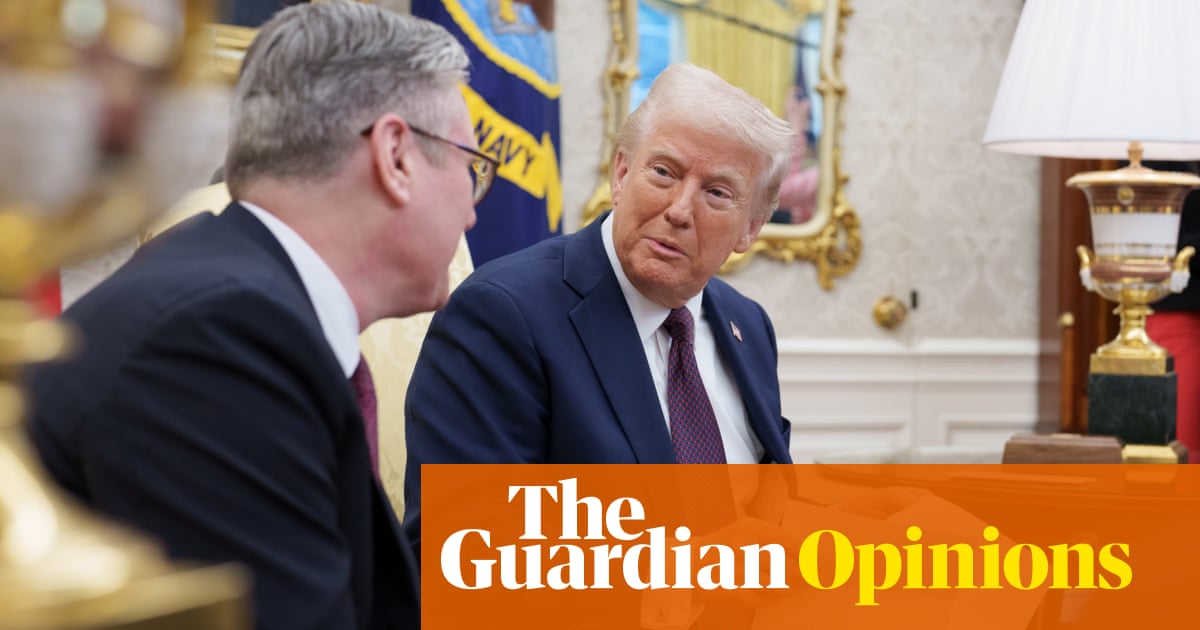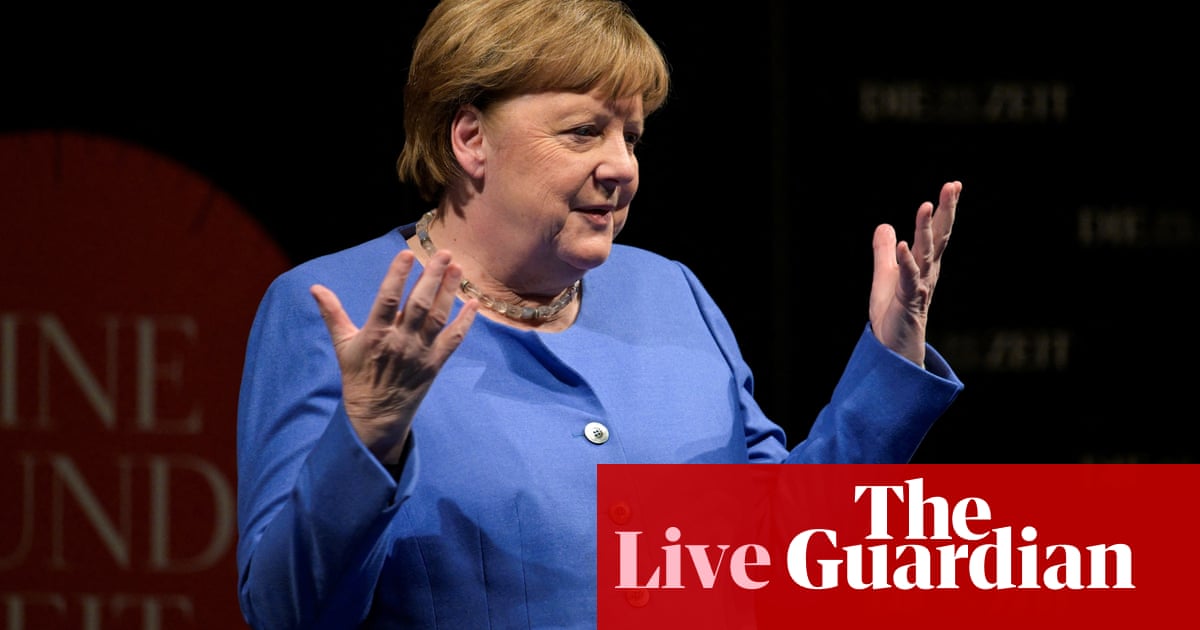Gold, "the ultimate Trump hedge" hits record high
Gold has hit a new record high this morning, as nervous investors seek out a safe haven asset.
The spot price of gold has gained 0.6% today, to a new alltime high of $2,861.78 per ounce.
Gold has now gained 9% so far this year, adding to the 26% gain posted in 2024.

Analysts say that gold is benefitting from concerns about the prospect of disruption under Donald Trump, and fears over the disruption tariffs could cause.
Jim Reid, strategist at Deutsche Bank, told clients:
Investors have grown hopeful that the tariff delays for Mexico and Canada will mean that tariffs are ultimately avoided, whether that’s via further delays or some kind of deal.
If that does transpire, then that would avoid a major trade shock that hits growth and raises US inflation, hence the more positive market reaction over the last 24 hours. Nevertheless, there’s little doubt that markets remain pretty nervous about the whole situation, with tariff risk still being priced in to several key assets, and gold prices hit an all-time high.
Ipek Ozkardeskaya, senior analyst at Swissquote Bank, says gold could be “the ultimate Trump hedge”, explaining:
Investors may look more relaxed now than they did at the start of the week, but havens continue to see increased demand on the back of growing global uncertainties under Trump’s hectic lead and with the prospects that the first weeks under Trump is just a foretaste of what’s to come in the next four years.
And there is not a better hedge than gold for protecting a portfolio from Trump worries: the more chaotic international relations become, the greater the demand—especially from central banks looking to reduce US exposure should Trump turn his focus on them.
As a result, gold hit a record high for the fourth straight session, reaching $2,860 per ounce in Asia for the first time ever. At this pace, Trump makes $3,000 look like an easy target…
Key events Show key events only Please turn on JavaScript to use this feature
Wegovy and Ozempic producer Novo beats sales forecasts

Julia Kollewe
Novo Nordisk has reported better-than-expected revenues, with sales of its Wegovy obesity drug surging by 86% last year, but expects growth to slow this year.
The Danish company has struggled to keep up with demand for its obesity and diabetes treatments Wegovy and Ozempic, which have to be injected by users once a week. The demand has turned Novo into Europe’s biggest company, but it briefly lost the title to French luxury goods giant LVMH last month after it released disappointing trial results for a next-generation obesity drug, CagriSema.
The drug did not achieve its target of 25% weight loss in a late-stage trial, sending the company’s share price sharply lower. Novo said today it plans to submit it for regulatory approval early next year, slightly later than its previous expectation of late 2025. The chief executive, Lars Fruergaard Jørgensen, said CagriSema is more potent than Wegovy, and that a new trial will look at different doses and duration. The recent trial data showed some people reached adequate weight loss on lower doses.
Another new obesity drug called amycretin had positive results in an early stage trial.
Sales of Wegovy jumped by 86% last year, contributing to a 26% increase in overall sales to DKr290bn (£32bn) last year, higher than analysts’ forecasts, and a pre-tax profit of DKR127bn (£14bn), up 22%. It expects sales growth to slow to between 16% and 24% this year.
Novo shares have fallen more than 40% since hitting a record high last June. US rival Eli Lilly, which makes the obesity drug Zepbound and Mounjaro for diabetes, reported weaker-than-expected sales last month.
Novo bought Catalent, a drug manufacturer for $16.5bn last year to ramp up production of its weight loss drugs.
Jørgensen said:
“We are pleased with the performance in 2024, where 26% sales growth reflects that more than 45 million people are now benefiting from our treatments.
Further, we completed the acquisition of the three Catalent sites, and during the year, we progressed our R&D pipeline, including obesity projects such as CagriSema and amycretin.”
Gold, "the ultimate Trump hedge" hits record high
Gold has hit a new record high this morning, as nervous investors seek out a safe haven asset.
The spot price of gold has gained 0.6% today, to a new alltime high of $2,861.78 per ounce.
Gold has now gained 9% so far this year, adding to the 26% gain posted in 2024.

Analysts say that gold is benefitting from concerns about the prospect of disruption under Donald Trump, and fears over the disruption tariffs could cause.
Jim Reid, strategist at Deutsche Bank, told clients:
Investors have grown hopeful that the tariff delays for Mexico and Canada will mean that tariffs are ultimately avoided, whether that’s via further delays or some kind of deal.
If that does transpire, then that would avoid a major trade shock that hits growth and raises US inflation, hence the more positive market reaction over the last 24 hours. Nevertheless, there’s little doubt that markets remain pretty nervous about the whole situation, with tariff risk still being priced in to several key assets, and gold prices hit an all-time high.
Ipek Ozkardeskaya, senior analyst at Swissquote Bank, says gold could be “the ultimate Trump hedge”, explaining:
Investors may look more relaxed now than they did at the start of the week, but havens continue to see increased demand on the back of growing global uncertainties under Trump’s hectic lead and with the prospects that the first weeks under Trump is just a foretaste of what’s to come in the next four years.
And there is not a better hedge than gold for protecting a portfolio from Trump worries: the more chaotic international relations become, the greater the demand—especially from central banks looking to reduce US exposure should Trump turn his focus on them.
As a result, gold hit a record high for the fourth straight session, reaching $2,860 per ounce in Asia for the first time ever. At this pace, Trump makes $3,000 look like an easy target…
China's CSI 300 sees 'measured' losses
Chinese stocks have slipped on the first day of trading after the lunar New Year holidays.
The CSI 300 index of big Chinese companies traded in Shanghai or Shenzhen has slipped by almost 0.6% today.
Ipek Ozkardeskaya, senior analyst at Swissquote Bank, says:
The Chinese markets opened for the first time after a long Lunar New Year holiday, and they opened down on a set of weaker-than-expected PMI figures, on the news of 10% tariff on its exports toward Trump’s USA, and a further escalation of the trade war with the tit-for-tat measures announced yesterday from Beijing, including 15% tariffs on US coal and LNG imports and an antitrust probe into Google.
But losses in the CSI 300 index remained measured, as the 10% tariffs from the US were considered as being quite modest – compared to the chatter of up to 60% tariffs, and China’s response to the US was also seen moderated.
Markets calmer over trade war fears
After the mayhem of ‘Manic Monday’, a level of calm has returned to the financial markets today (despite the weakening yuan).
The pound has hit a one -week high of $1.249 last night, recovering all its losses earlier this week as fears of a global trade war hit investor confidence.
Wall Street recovered its poise too yesterday, with the Dow Jones industrial average gaining 0.3%.
Traders are relieved that Donald Trump suspended US tariffs on Canada and Mexico for 30 days on Monday night – although also aware that only kicks the can down the road for a month.
Michael Brown, senior research strategist at Pepperstone, says:
In fact, this whole saga could well rumble on until the start of April, when the review ordered by President Trump into US trade policy is due to report back.
Perhaps, it is at that point, that we will see tariffs shift from being used as a bargaining chip to further certain political aims, to actually being used as a measure to address trade imbalances. Still, whatever the purpose, the whole thing remains a zero-sum game.
Yuan slips on trade-war anxiety
China’s currency has weakened as financial traders return to work after the Lunar new year.
The eruption of the new US-China trade war this week, which saw tariffs added to exports between the two countries yesterday, has ended the holiday spirits.
This pushed the yuan towards the 16-month low set last month.
But the fall in the yuan has been cushioned by China’s central bank, as Reuters explains:
The dollar rose more than 0.5% against the yuan to a high of 7.2863 in onshore trade, though its gains were capped by the People’s Bank of China (PBOC) setting a stronger-than-expected yuan midpoint rate, around which the currency is allowed to trade in a 2% band.
The fixing had been closely watched by investors for clues on whether Beijing would allow the currency to weaken to blunt the impact of sweeping new tariffs imposed by U.S. President Donald Trump.
Economists have suggested that China could respond to US tariffs by allowing its currency to weaken, which would boost exports and fight deflation.
UK new car sales fall in January, industry data shows
Good morning, and welcome to our rolling coverage of business, the financial markets and the world economy.
New car registrations in the UK dropped in January, preliminary industry data showed on Wednesday, due to slower demand from both fleet and private buyers.
The Society of Motor Manufacturers and Traders (SMMT) reported that overall registrations fell to approximately 137,000 units in January, with over a fifth of those being electric vehicles, aligning with the industry’s continued commitment to the shift towards EVs.
That means a small year-on-year drop in car sales – in January 2024, 142,876 new cars were registered.
The SMMT is due to release their full report at 9am.
Ian Plummer, commercial director at Auto Trader, reports an increase in interest in electric cars – which could help the UK hit its target of banning the sale of new petrol and diesel cars by 2035.
“January marked a lacklustre start to 2025 for the new car market, as registrations fell for the fourth month in a row. This year will offer its fair share of challenges for established brands, amid economic uncertainty, tariff threats from the US and fierce competition from a growing array of new Chinese entrants.
“A look under the bonnet however does offer some optimism for the industry, with visits to our new car platform up over 20% following the festive lull.
“And we can also see the big increase in electric car enquiries made on our platform late last year already playing through into the market, which will come as some relief to manufacturers facing another steep increase in ZEV mandate targets in 2025. There’ll be no let-up in pressure to maintain electric vehicle demand and hit the 28% target, likely resulting in offers to entice buyers over the coming months.”
The agenda
-
9am GMT: eurozone services and composite PMI for January
-
9am GMT: SMMT data on UK car sales in January
-
9.30am GMT: UK services and composite PMI for January
-
3pm GMT: US services and composite PMI for January

 3 months ago
74
3 months ago
74













































